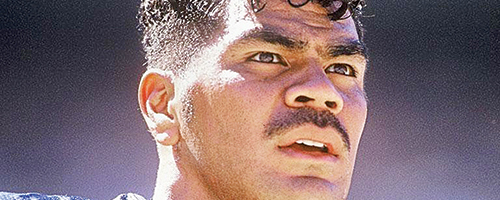Over the last few years, there has been a plethora of documentary-style filming that has flowed into our media. It seems that a mixture of sudden close-up shots, shaky cameras or extensive single-shot scenes have showed up whether it be in an episode of The Office or a movie such as The Bourne Ultimatum. However, this is nothing new. Directors like Agnes Varda have been experimenting with such techniques since the ’50s.
From Cleo to the Beaches
Over the last few years, there has been a plethora of documentary-style filming that has flowed into our media. It seems that a mixture of sudden close-up shots, shaky cameras or extensive single-shot scenes have showed up whether it be in an episode of The Office or a movie such as The Bourne Ultimatum. However, this is nothing new. Directors like Agnes Varda have been experimenting with such techniques since the ’50s.
This is not to say that Varda invented the style, or to say that it is her only form of filming. Rather, it is a testament to her, and filmmakers like her, whose experiments in film still contribute and influence the cinema we see today.
On July 10 and 11, Portland’s Northwest Film Center will showcase Cleo from 5 to 7 to kick off their Agnes Varda series, “Vardian Vision,” which will run through August and exhibit some of Varda’s lifetime of work, offering viewers a chance to see not only what makes this director so great, but also the opportunity to witness decades of the artist’s craft unfold on screen.
When Varda’s second film, Cleo from 5 to 7, glowed upon movie screens in 1962, it definitely made an impression on its audience. Through looking at the film from a modern perspective, one can perceive obvious influences that remain in today’s cinema. Varda is a director who has never been afraid to take risks and experiment. That daring nature has paid off.
Cleo from 5 to 7 follows a French singer, Cleo, as she kills time waiting for some rather imperative test results from her doctor. Facing her own mortality, Cleo sets out on a two-hour jaunt through Paris visiting friends, seeing a fortuneteller and eventually meeting a soldier with whom she strikes a chord. During this time, she examines issues of mortality and the nature of relationships, however superficial or deep they may be.
Visually, this film is delightful. The camera movements in the film verge on Hitchcockian. Cleo walks from place to place as the camera steadily follows her along a backdrop of Parisian storefronts, parks and alleyways. The scenes are set up so that there is always something beyond the central figure for your eyes to dance around. Cafes are diversely crowded and active, street performers practice their craft of shocking passersby and random children play on toy pianos.
The film will be accompanied by Varda’s 1967 short film Uncle Yanco, which documents Varda’s meeting of a relative she had been previously unaware of that lives on a boat and makes his living as a painter. The 22-minute feature shows Varda encountering her newfound relation in the height of San Francisco’s hippie era.
“Vardian Visions” at the NWFC will feature other works of Varda’s in chronological order, including Lion’s Love (1969), Mur Murs (1980), Documenteur (An Emotional Picture) (1981), Vagabond (1985), Kung Fu Master (1987), Jacquot De Nantes (1990), The Gleaners and I (2000) and finally The Beaches of Agnes (2008), which is said to be her last film.




